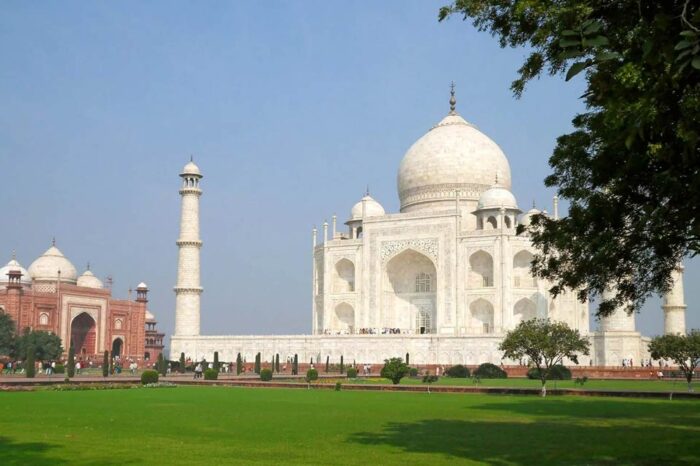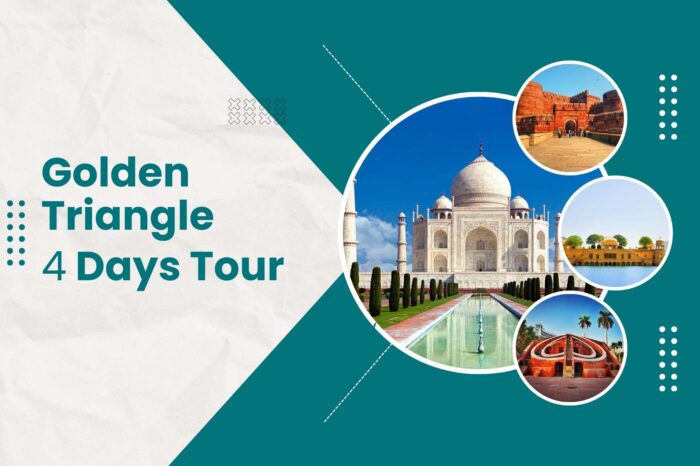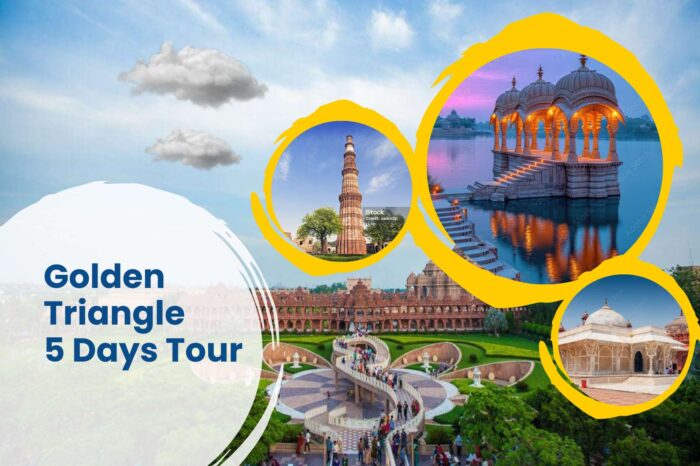Golden Triangle with Varanasi 7 Days Tour
India offers a truly authentic adventure for individuals hailing from the western hemisphere. The experience is stimulating and absorbing, ... yet at times daunting, and can evoke a range of emotions from the observer, including shock and awe. India is home to one of the world’s most significant dramas, an ancient, vast, and densely populated land that is committed to the most formidably challenging exercise in mass democracy.
This spectacle is characterized by a mixture of hope, pride, paradox, and uncertainty, and is conducted in an open and transparent manner, which is a credit to India. The lasting memories of India are those of hospitality, kindness, good humour, and generosity
India offers a truly authentic adventure for individuals hailing from the western hemisphere. The experience is stimulating and absorbing, yet at times daunting, and can evoke a range of emotions from the observer, including shock and awe. India is home to one of the world’s most significant dramas, an ancient, vast, and densely populated land that is committed to the most formidably challenging exercise in mass democracy.
This spectacle is characterized by a mixture of hope, pride, paradox, and uncertainty, and is conducted in an open and transparent manner, which is a credit to India. The lasting memories of India are those of hospitality, kindness, good humour, and generosity.
Day 1: Delhi – Varanasi
Please be advised that the scheduled departure time for the Delhi sightseeing tour is 9:00 am.
Today’s itinerary will involve an exploration of Delhi, beginning with a guided tour of the Old City of ‘Shahjahanabad’. The tour will commence with a visit to Raj Ghat, the cremation site of Mahatma Gandhi, followed by a drive past the Red Fort, a magnificent monument constructed from red sandstone during the height of the Mughal Empire.
Subsequently, we will proceed to Jama Masjid, the largest mosque in Asia, built by Shahjahan, where we will embark on a bicycle rickshaw tour of the bustling streets. Following this, we will embark on a guided tour of New Delhi, which reflects the legacy left behind by the British. Our first stop will be Qutab Minar, the tallest stone tower in India, built to establish the might of Islam and the onset of Muslim rule in India.
We will then visit Humayun’s Tomb, the first great example of a new distinctive style that developed to become the hallmark of the Mughal Dynasty. Additionally, we will drive past the imposing India Gate (War Memorial Arch), the Parliament Buildings, and the Rashtrapati Bhawan (the President’s residence).
Later in the day, you will be transferred to Varanasi via flight from New Delhi Domestic Airport.
Upon arrival, you will check-in at the hotel and rest for the remainder of the day. We hope you enjoy your stay in Varanasi.
Overnight accommodations will be provided at the hotel.
Day 2: Varanasi
Following breakfast, your chauffeur and guide will accompany you to explore the UNESCO World Heritage Site of Sarnath. Commence your tour at the Chaukhandi Stupa, an elevated structure encompassed by an octagonal tower which serves as the gateway to Sarnath. Proceed to the Dhamek Stupa, a cylindrical structure constructed of stone and brick, adorned with intricate floral carvings. Subsequently, visit the Mulagandha Kuti Vihar Temple, which houses remarkable frescoes and Buddhist literature. Conclude your tour with a visit to the Sarnath Museum, where you can view its collection of
Buddhist art and sculpture.
In the evening, partake in the renowned Ganga Arti. This ritual involves a group of priests performing “Agni Pooja” (Worship to Fire) at this ghat, offering dedication to Lord Shiva, River Ganga (the Ganges), Surya (Sun), Agni (Fire), and the entire universe. Special Aarti’s are conducted on Tuesdays and during religious festivals.
Later, transfer to your hotel and retire for the day.
Day 3: Varanasi – Agra
Commence the day by being collected from the hotel premises at 5:30 am, and proceed to the ghat to partake in a morning boat ride during the time of sunrise.
Following this, return to the hotel for breakfast and a brief period of rest.
Subsequently, embark on a visit to the Old City of Varanasi, B.H.U. University, Hanuman Temple, Bharat Mata Temple, among other notable sites.
In the evening, relish in the evening prayer ceremony by means of a boat ride.
Prior to being transported to the railway station in Varanasi, indulge in a delectable lunch at a local restaurant.
Proceed to board the overnight train to Agra.
Day 4: Agra
Your chauffeur will be present at Tundla Railway Station to receive you.
Subsequently, you will be transferred to your hotel where you can unwind and relax.
Following this, you may embark on your sightseeing tour. The highlight of this tour is the Taj Mahal, a magnificent architectural masterpiece renowned for its aesthetic beauty. Commissioned by Emperor Shah Jahan in 1631, this exquisite white marble mausoleum was built in honour of his beloved queen, Mumtaz Mahal. It took 20,000 artisans 22 years to complete this grand monument. Witness the breathtaking interplay of light as the sun rises and casts its golden rays over the pearl white tomb, recreating the magic of the Taj. After capturing some memorable photographs, you will have ample time to explore the Taj Mahal.
Thereafter, we will return to the hotel for breakfast. Following breakfast, we will visit the Agra Fort, an exceptional example of Mughal architecture and a stronghold of the Mughal Empire under successive generations. Shah Jahan, the creator of the Taj, spent this last years in imprisonment awarded by his son Aurangzeb, here. The fort was built in the late 1560s by their predecessor, Akbar, with later embellishments by Jahangir, his son, and Shah Jahan, his grandson.
You will enjoy an exquisite Indian lunch at the Hotel Courtyard By Marriott (5 Star Hotel).
After lunch, we will proceed to Itmad-ud-Daulah’s Tomb, a marble mausoleum built by Nur Jahan, the wife of Emperor Jahangir, in memory of her father, Ghiyas Beg. Also known as the ‘Baby Taj’, it is beautifully conceived in white marble, mosaic and lattice.
Day 5: Agra – Fatehpur Sikri – Jaipur
After breakfast, we shall embark on a journey to the city of Jaipur, commonly referred to as the pink city, which is approximately 237 km away and takes approximately six hours to drive.
Along the way, we shall visit Fatehpur Sikri, the abandoned capital of Akbar, located 37 km from Agra. The city was constructed in 1571 in honour of the Sufi saint, Sheikh Salim Chisti, and served as the Mughal capital for 14 years before being abandoned due to water scarcity. The city’s architecture is a blend of Hindu and Mughal influences, constructed using red sandstone. The Buland Darwaza, a colossal 54-metre gateway, is the entrance to the fort, and other notable monuments include the Tomb of Sheikh Salim Chishti, Birbal House, and the Diwan-i-Khas.
Upon arrival in Jaipur, we shall proceed to check-in at the hotel.
Jaipur is a captivating destination nestled between imposing forts and the rugged Aravalli Hills. The city is renowned for its pink buildings, hence the nickname “the pink city.” Jaipur is a bustling capital city and a business hub with all the amenities of a modern metropolis, yet it retains an old-world charm that never ceases to amaze visitors.
The remainder of the evening is at your leisure.
Day 6: Jaipur
Today, an exhilarating day awaits you with a scheduled visit to the Hawa Mahal, also known as the Palace of Winds. This five-storey architectural marvel boasts a stunning pyramidal facade, overhanging windows with latticed screens, domes, and spires.
Following this, your tour will continue with a drive to the ancient capital of Amer, where you will witness the magnificent Amber Fort. Situated on a ridge just outside Jaipur city, the fort is surrounded by fortified battlements and overlooks Moata Lake. The ruins and remains of the fort are spread over the Aravalli hills, and sprawling crenellated walls lattice the surrounding area. You will be taken on a jeep or a decorative elephant ride up to the main gate, where you can explore the chambers and hallways of the palace, renowned for its exceptional design and decoration. Within the complex, the Ganesh Pol, an imposing gateway painted with the images of the Elephant Headed God – Ganesh, is a sight to behold. The Sukh Niwas, Jas Mandir Apartments, and the Charbagh Garden with its perfectly proportioned landscaping showcase the merging of Rajput and Mughal architectural styles. Pierced screen windows offer views from different vantage points, and shimmering mirrors encrust the walls of Sheesh Mahal.
In the afternoon, enjoy a tour of the Pink City, also known as the “abode of rajahs.” The highlights of the tour include a visit to the City Palace Museum, which houses a superb collection of Rajasthani costumes and armoury of Mughals and Rajputs, including swords of different shapes and sizes with chiselled handles. The museum also features many antiques and artefacts belonging to the ruling family, including a collection of weaponry.
Additionally, it has an art gallery with an excellent collection of miniature paintings, carpets, royal paraphernalia, and rare astronomical works in Arabic, Persian, Latin, and Sanskrit.
The awe-inspiring Jantar Mantar Observatory, a stone Astrological & Astronomical Observatory built by Maharaja Jai Singh in the 18th century, is also included in the tour.
Your overnight stay will be at a Jaipur hotel.
Day 7: Jaipur – Delhi – Airport
Following an early breakfast, embark on a journey to Delhi via one of India’s most exceptional freeways.
Subsequently, proceed to the hotel for check-in or alternatively, be transported to the airport for your onward flight.
- Confirmation of your booking will be provided upon completion of the reservation process.
- The availability of flight and train tickets is contingent upon supply. Unforeseen circumstances may cause delays in the timing of train and flight travel.
- It is possible to modify the itinerary to suit your preferences.
- Please note that this activity is not wheelchair accessible, but strollers are permitted.
- Public transportation is conveniently located nearby, and infant seats are available.
- This activity is not recommended for pregnant travellers. Most individuals are able to participate in this tour/activity.
- This is a private tour/activity, and only members of your group will be involved
- It is possible to cancel the experience and receive a full refund.
- If done so at least 24 hours prior to its commencement.
- However, if the cancellation is made less than 24 hours before the start time, the amount paid will not be refunded.
- Additionally, any modifications made within 24 hours of the experience’s start time will not be accepted.
- It is important to note that the cut-off times are determined by the local time of the experience..
-
DepartureDelhi
-
Departure TimeApproximately 09:00 AM
-
Return TimeApproximately 08:30 PM
-
Included6 - nights’ accommodation in 5 -star hotelsFlight TicketsTransport by private air-conditioned vehicleHotel pickup and drop offAirport Pick up & DropEnglish-speaking Professional guideMeals (Breakfast & Exquisite Lunch )Monument Entrance feesAll toll taxes & ParkingWater bottles while travelling
-
Not IncludedGratuityAlcoholic DrinksAnything of personal Usage



